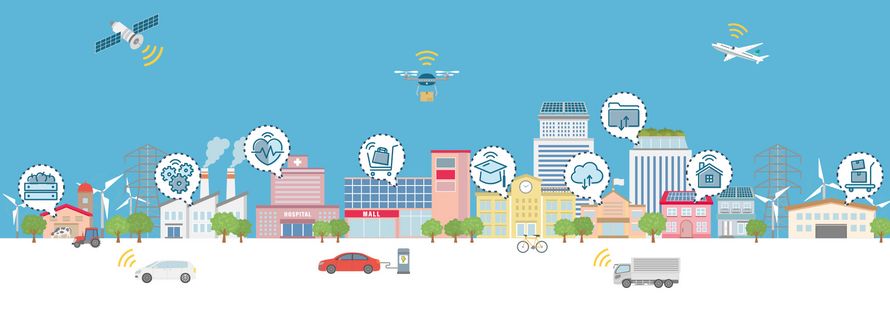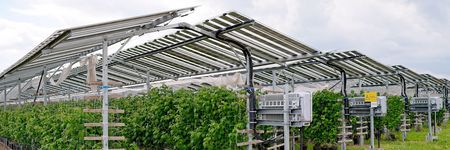
Autonomous Drones: Revolutionizing Industries with Precision and Efficiency
– Avionics & Defense, Automotive, Industrial AutomationThe emergence of autonomous drones has marked a significant technological milestone, opening new frontiers in various industries. These sophisticated Unmanned Aerial Vehicles (UAVs) are equipped with advanced sensors, cameras, and Artificial Intelligence (AI) algorithms, enabling them to perform tasks that were once deemed challenging or impossible. From disaster management to agriculture, environmental monitoring, and infrastructure inspection, autonomous drones are reshaping how businesses and governments operate, offering unprecedented levels of efficiency, Safety, and precision.
SYSGO plays a pivotal role in this transformation. With its robust, secure, and high-performance products, SYSGO provides the essential foundation for the reliable and safe operation of autonomous drones. However, the deployment of these drones comes with its own set of challenges, ranging from regulatory hurdles to technical constraints. Here we get deeper into the various use cases of autonomous drones, and discuss the challenges that need to be addressed for widespread adoption.
Use Cases of Autonomous Drones
1. Disaster Management and Response
- Search and Rescue Operations: In the aftermath of natural disasters such as earthquakes, floods, or wildfires, time is of the essence. Autonomous drones equipped with high-resolution cameras and thermal imaging technology can quickly scan large areas, identifying survivors trapped under debris or in inaccessible locations. Their ability to fly at low altitudes and navigate through challenging environments makes them invaluable tools for first responders. Drones can operate in conditions that are hazardous for human teams, ensuring that search and rescue operations are carried out efficiently and safely.
- Damage Assessment: After a disaster, assessing the extent of damage is crucial for prioritizing recovery efforts. Drones can provide detailed aerial images and 3D maps of affected areas, allowing authorities to evaluate damage to infrastructure, homes, and critical facilities. This data can be processed in real-time to support decision-making, enabling quicker mobilization of resources and reducing the overall response time.
2. Agriculture
- Crop Monitoring and Health Assessment: The agriculture industry is increasingly turning to drones for monitoring crop health. Equipped with multispectral and hyperspectral cameras, drones can capture data that is invisible to the human eye, such as plant stress, disease onset, and pest infestations. By analyzing this data, farmers can make informed decisions about irrigation, fertilization, and pest control, leading to healthier crops and higher yields.
- Precision Farming: Precision farming involves the precise application of water, fertilizers, and pesticides to crops, which minimizes waste and environmental impact. Drones can be programmed to fly over fields and deliver these inputs exactly where they are needed, reducing the overuse of chemicals and optimizing resource use. This approach not only enhances productivity but also promotes sustainable farming practices.
3. Environmental Monitoring and Conservation
- Wildlife Tracking and Poaching Prevention: Autonomous drones are revolutionizing wildlife conservation by providing a non-intrusive means of monitoring animal populations and their habitats. Drones can track the movement of endangered species, monitor breeding grounds, and detect signs of poaching activities. This real-time data is crucial for conservationists and park rangers to protect wildlife and respond swiftly to threats.
- Environmental Surveys: Drones are also used to monitor environmental changes such as deforestation, land degradation, and pollution. They can cover large areas in a short time, collecting data that is critical for environmental impact assessments and policy-making. For example, drones can monitor the health of coral reefs, track the spread of forest fires, and detect illegal mining activities.
4. Infrastructure Inspection and Construction
- Building and Structural Inspections: Inspecting large structures like bridges, dams, and skyscrapers is a challenging and often dangerous task. Autonomous drones can access hard-to-reach areas, capturing high-resolution images and videos that can be analyzed for structural integrity. This not only enhances Safety by reducing the need for human inspectors to work at dangerous heights but also improves the accuracy of inspections.
- Construction Monitoring: In the construction industry, drones are used to monitor the progress of projects, ensuring that they stay on schedule and within budget. Drones can provide real-time data on the movement of materials, the deployment of machinery, and the overall progress of the construction. This information is invaluable for project managers who need to coordinate large teams and manage resources efficiently.
5. Energy Sector
- Inspection of Equipment: The energy sector relies heavily on infrastructure such as pipelines, wind turbines, and oil storage tanks, which require regular inspections to ensure safe operation. Drones can inspect these facilities without the need for human entry into hazardous areas, significantly reducing the risk of accidents. They can detect issues such as leaks, corrosion, and mechanical failures early, allowing for timely maintenance and reducing downtime.
- Maintenance and Monitoring: In addition to inspections, drones are used for the ongoing monitoring of energy infrastructure. For example, drones can patrol power lines, detecting vegetation encroachment or equipment malfunctions. This continuous monitoring helps in maintaining the reliability of energy supply and preventing large-scale outages.
6. Media and Entertainment
- Aerial Photography and Filming: The media and entertainment industry was one of the early adopters of drone technology. Drones have transformed aerial photography and cinematography, providing filmmakers with the ability to capture stunning, high-quality aerial shots that were previously only possible with expensive helicopter rentals. Today, drones are used in movies, TV shows, advertisements, and live events to create dynamic and immersive visual content.
- Live Event Broadcasting: Drones are increasingly being used for live event broadcasting, providing dynamic and real-time aerial coverage of sports events, concerts, festivals, and other large-scale gatherings. Equipped with high-definition cameras and stabilized gimbals, drones can capture unique angles and perspectives that traditional ground-based cameras cannot achieve. This aerial footage can be streamed live to viewers, offering them a more immersive experience. For instance, during a marathon, drones can follow athletes through the course, providing continuous coverage and offering spectators an up-close view of the race as it unfolds. Similarly, at music festivals, drones can capture the energy of the crowd and the performances from above, enhancing the broadcast with stunning visuals. The ability of drones to quickly maneuver and reposition during live events allows broadcasters to adapt to the dynamic nature of such events, ensuring comprehensive and captivating coverage.
7. Public Safety and Property Management
- Surveillance and Monitoring: Drones are increasingly used by law enforcement agencies for surveillance and monitoring purposes. They can monitor large public events, manage traffic, and assist in crime scene investigations. Drones provide law enforcement with a bird's-eye view of situations, enabling them to respond more effectively to incidents and enhance public Safety.
- Property Surveys: In the real estate sector, drones are used to capture aerial views of properties, providing potential buyers with a comprehensive understanding of the layout and surrounding area. Drones can also be used for property management, allowing managers to inspect large estates, identify maintenance issues, and monitor landscaping.
Challenges in the Deployment of Autonomous Drones
Despite the promising potential of autonomous drones, several challenges must be addressed to realize their full benefits:
- Safety and Reliability: Autonomous drones must operate safely and reliably, particularly in Safety-critical applications. This requires robust hardware and software, as well as rigorous testing and validation processes. Ensuring that drones can operate safely in all conditions, including adverse weather and in the presence of obstacles, is essential.
- Cybersecurity: As drones become more connected, they are increasingly at risk of cyberattacks. Ensuring the Security of drone operations and protecting the data they collect is a critical challenge. This includes securing communication channels, protecting against unauthorized access, and ensuring that the drone’s software is free from vulnerabilities.
- Battery Life and Payload Capacity: The battery life of drones is a limiting factor in many applications, restricting flight time and the distance that can be covered. Similarly, the payload capacity of drones limits the types of sensors and equipment they can carry. Advances in battery technology and lightweight materials are needed to overcome these limitations.
- Regulatory Compliance: The regulatory landscape for drones is complex and varies significantly across different regions. Ensuring that drones comply with airspace regulations, privacy laws, and Safety standards is a major challenge. Drone manufacturers and operators must navigate these regulations to avoid legal issues and ensure safe operations.
- Public Perception and Acceptance: The widespread use of drones raises concerns about privacy, noise, and Safety among the general public. Addressing these concerns through transparent communication, adherence to regulations, and demonstrating the benefits of drone technology is important for gaining public acceptance.
SYSGO’s Role in enabling Autonomous Drones
SYSGO, as leading provider of embedded software solutions, plays a critical role in empowering the next generation of autonomous drones. By delivering robust, secure, and Safety-certified platforms, SYSGO ensures that drones can operate reliably across a wide array of industries, from disaster management to media and entertainment. Here’s how SYSGO’s offerings contribute to the development, deployment, and safe operation of autonomous drones:
PikeOS: The Foundation of Safe and Reliable Drone Operation
PikeOS is SYSGO's flagship real-time operating system (RTOS) and hypervisor, designed to meet the stringent demands of Safety-critical and mission-critical applications. In the context of autonomous drones, PikeOS offers several key advantages:
- Safety and Security Partitioning: PikeOS allows for the partitioning of different functions within a drone’s system. This means that critical functions, such as navigation, flight control, and obstacle avoidance, are isolated from non-critical ones, like data processing and communication. By isolating these functions, PikeOS minimizes the risk of interference between them, ensuring that a malfunction in one area does not compromise the entire system. This is particularly crucial in applications where Safety is paramount, such as in public Safety operations or in the energy sector.
- Multi-OS Support: PikeOS can run multiple operating systems simultaneously, enabling drones to support a variety of software applications on a single hardware platform. This flexibility is essential for drones that need to perform complex tasks that require different types of processing, such as real-time image analysis, AI-driven decision-making, and data encryption. The ability to support multiple operating systems on a single platform reduces hardware costs and simplifies the overall system architecture.
- Deterministic Real-time Performance: For autonomous drones, real-time performance is non-negotiable. Whether it’s avoiding an unexpected obstacle or adjusting flight paths due to changing weather conditions, drones must respond immediately to external stimuli. PikeOS is designed to deliver deterministic real-time performance, ensuring that critical tasks are executed within precise timeframes. This capability is vital for maintaining the reliability and Safety of drone operations in dynamic and unpredictable environments.
Safety and Certification: Meeting Industry Standards
Safety is a top priority in the deployment of autonomous drones, especially in industries such as Aviation, Automotive, and public Safety, where the consequences of a failure can be catastrophic. SYSGO’s expertise in Safety-critical systems and its comprehensive support for industry certifications make it an invaluable partner for drone manufacturers:
- DO-178C Certification: For drones used in Avionics, compliance with the DO-178C standard is mandatory. This standard outlines the guidelines for software considerations in airborne systems and equipment certification. SYSGO’s PikeOS is designed to support the certification process, providing the necessary documentation, tools, and processes to achieve compliance. This ensures that drones meet the rigorous Safety standards required for operation in controlled airspace up to DAL A.
- ISO 26262 Certification: In the Automotive industry, drones are increasingly being used for tasks such as traffic monitoring, infrastructure inspection, and emergency response. Compliance with ISO 26262, the international standard for functional Safety of electrical and electronic systems in road vehicles, is critical for these applications. SYSGO’s solutions support ISO 26262 certification, enabling drone manufacturers to develop systems that meet the highest Safety standard ASIL D.
- IEC 61508 and EN 50128 Certification: For drones used in Industrial and Railway applications, compliance with IEC 61508 (functional Safety of electrical/electronic/programmable electronic Safety-related systems) and EN 50128 (software for railway control and protection systems) is essential. SYSGO’s products are designed to facilitate certification according to these standards, ensuring that drones can be safely integrated into industrial and railway environments.
Security: Protecting Drones from Cyber Threats
As drones become more sophisticated and connected, they also become more vulnerable to cyber threats. Unauthorized access, data breaches, and malicious attacks can have serious consequences, especially when drones are used in sensitive applications such as law enforcement, energy infrastructure monitoring, or wildlife conservation. SYSGO addresses these challenges by embedding robust Security features into its solutions:
- Secure Boot: PikeOS supports secure boot mechanisms, ensuring that only trusted and verified software is executed on the drone. This prevents unauthorized firmware or software from being loaded, protecting the drone from malicious code that could compromise its operation.
- Data Encryption: Autonomous drones often collect and transmit sensitive data, whether it’s high-resolution imagery from a disaster zone or surveillance footage from a public event. SYSGO’s solutions include support for advanced encryption standards, ensuring that data is protected both in transit and at rest. This is critical for maintaining the confidentiality and integrity of data collected by drones, particularly in applications involving sensitive or classified information.
- Secure Communication Protocols: Drones rely on wireless communication for control, telemetry, and data transfer. SYSGO ensures that these communications are secure by supporting encrypted communication protocols. This prevents eavesdropping, man-in-the-middle attacks, and unauthorized command injection, safeguarding the drone’s operations from external threats.
Real-time Performance: Ensuring Responsiveness in Critical Situations
The ability to process data and make decisions in real-time is crucial for autonomous drones, especially in applications where quick responses are necessary. SYSGO’s products are optimized to deliver the real-time performance required for these demanding tasks:
- Real-time Task Scheduling: PikeOS is designed to manage and prioritize tasks in real-time, ensuring that critical functions are executed without delay. This capability is essential for tasks such as obstacle avoidance, where milliseconds can make the difference between a successful maneuver and a collision.
- Low-latency Processing: Autonomous drones often need to process large amounts of sensor data in real-time, such as images from cameras, data from LiDAR (Light Detection and Ranging) systems, or signals from GPS (Global Positioning System) modules. SYSGO’s solutions minimize processing latency, allowing drones to analyze data and make decisions quickly. This is particularly important in dynamic environments, such as in search and rescue operations, where drones must adapt to rapidly changing conditions.
- Scalability and Flexibility: SYSGO’s solutions are scalable, allowing them to be used in drones of various sizes and capabilities. Whether it’s a small drone used for agricultural monitoring or a large UAV for industrial inspections, SYSGO’s products can be tailored to meet the specific performance requirements of the application.
Development Tools and Ecosystem Support
Beyond the core technology, SYSGO provides a comprehensive ecosystem of development tools, middleware, and support services that streamline the development and deployment of autonomous drones:
- Integrated Development Environment (IDE): SYSGO offers the CODEO IDE that simplifies the development process for drone applications. It includes tools for code development, testing, debugging, and simulation, enabling developers to build and refine their drone software efficiently.
- Middleware Integration: SYSGO supports the integration of various middleware platforms allowing developers to leverage existing libraries and frameworks, reducing development time and costs.
- Technical Support and Consulting: SYSGO provides extensive technical support and consulting services to assist drone manufacturers in implementing their solutions. This includes assistance with system architecture, Safety certification, Security implementation, and performance optimization.
Conclusion & Future Outlook
SYSGO’s suite of embedded software solutions, including PikeOS, is not only instrumental in enabling the safe, secure, and reliable operation of autonomous drones today but also lays the foundation for the future evolution of drone technology. By addressing critical requirements such as Safety certification, Cybersecurity, real-time performance, and development support, SYSGO empowers drone manufacturers to continue pushing the boundaries of what drones can achieve, opening up new possibilities for innovation.
As the adoption of autonomous drones accelerates across various industries, SYSGO’s role as a provider of trusted, high-performance embedded solutions will become increasingly pivotal. In the near future, drones are expected to integrate more advanced AI capabilities, expand their operational ranges, and take on more complex tasks, from autonomous deliveries to large-scale environmental monitoring. These advancements will require even more robust, scalable, and secure platforms.
Looking ahead, the continued collaboration between SYSGO and drone manufacturers will drive the development of next-generation UAVs that can operate safely and effectively in even more challenging environments. As regulatory frameworks evolve and technology advances, SYSGO’s solutions will help ensure that drones remain at the forefront of innovation, playing an ever-expanding role in industries from agriculture to infrastructure, and beyond. The future of autonomous drones is bright, and with SYSGO’s support, it will be both safe and secure.
-
Previous
-
Next

 Twitter
Twitter LinkedIn
LinkedIn Facebook
Facebook Reddit
Reddit RSS
RSS Copy link
Copy link
